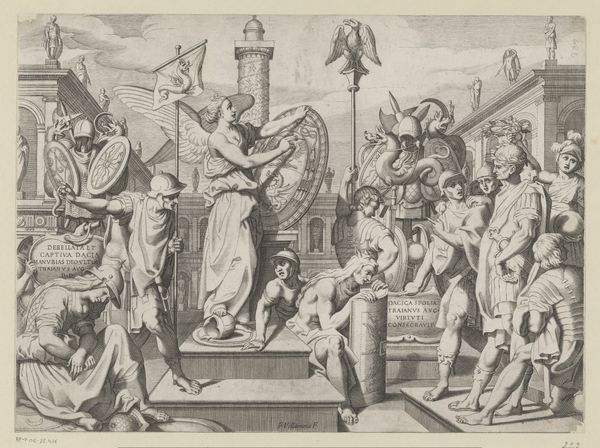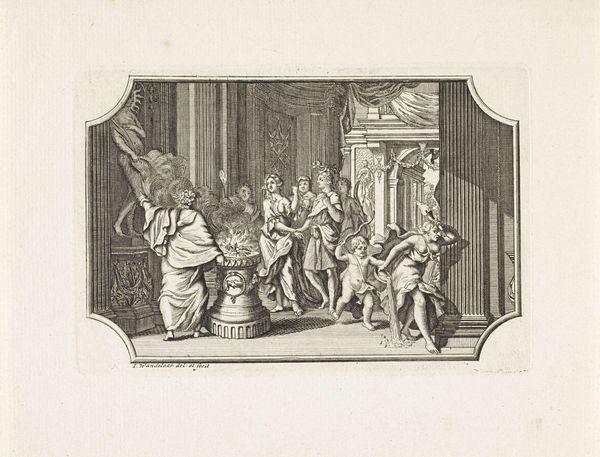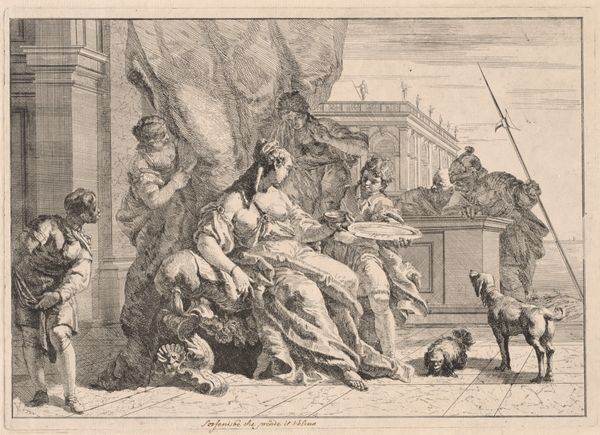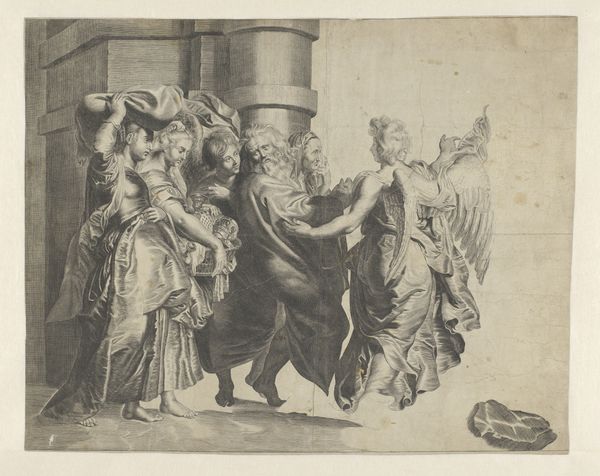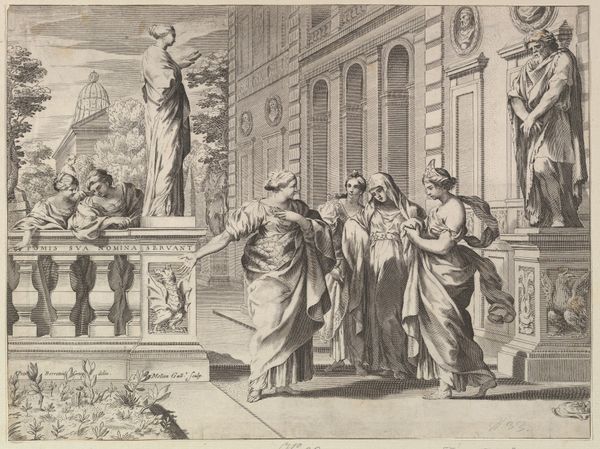
The Sacrifice of Polyxena, from "Bacchanals and Histories" 1744
0:00
0:00
drawing, print, etching, engraving
#
drawing
#
narrative-art
#
baroque
# print
#
etching
#
classical-realism
#
history-painting
#
engraving
Dimensions: Plate: 11 × 15 5/16 in. (28 × 38.9 cm) Sheet: 11 15/16 × 16 1/4 in. (30.3 × 41.3 cm)
Copyright: Public Domain
This is Francesco Fontebasso's "The Sacrifice of Polyxena," etched during the 18th century. Note the obelisk, standing tall and resolute amidst the tragic scene, as well as the ruined Greek temple. The obelisk, originally an Egyptian symbol of solar worship, was re-purposed by the Romans. It transcended its initial context, bearing witness to the rise and fall of civilizations, an enduring monument that connects our deepest subconscious. Similarly, the ruined temple is a visual representation of the transience of human power and the inevitable decay of even the grandest structures. The sacrifice of Polyxena evokes a primal emotional response—fear, pity, and a sense of the fragility of life. Fontebasso masterfully taps into these collective memories, creating a powerful tableau that resonates across centuries. These motifs become vessels of cultural memory, passed down through generations and constantly reinterpreted, embodying a continuous dialogue between past and present.
Comments
No comments
Be the first to comment and join the conversation on the ultimate creative platform.

